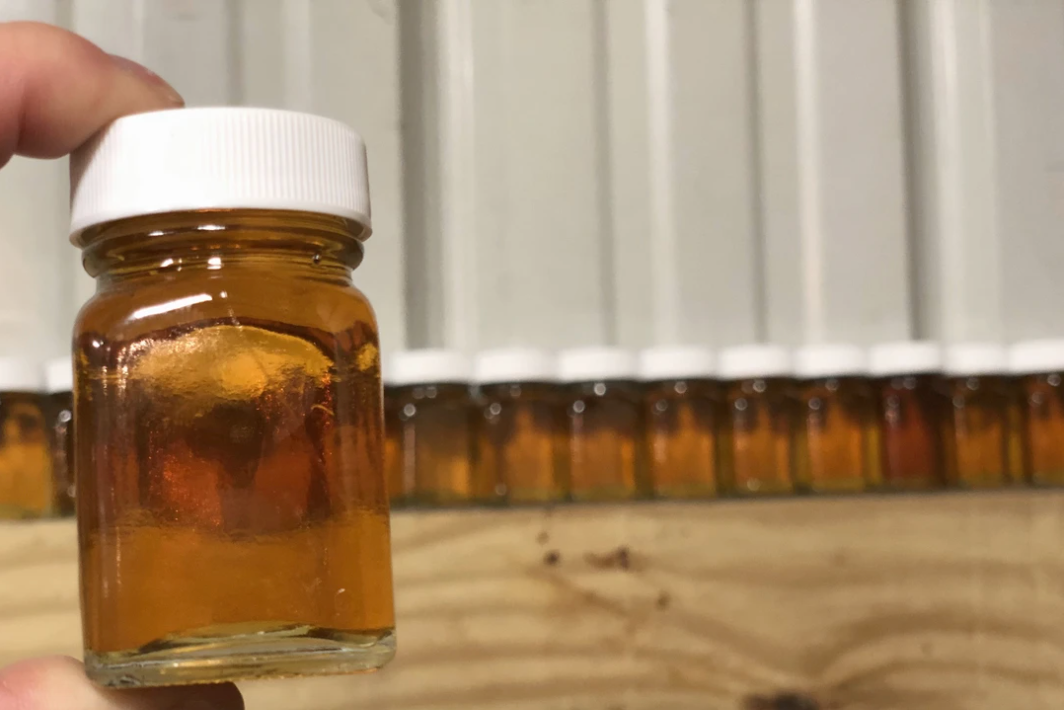On a frigid winter morning dad and I are driving down the snow-covered road in his muddy pick-up, and I could see the steam rising from the sugar shanty off in the distance. I crack my window to catch a whiff of the sweet aroma of boiling sap mixed with the chilly winter air and as the sweet scent flooded through the truck window, so too did the memories.

As a kid growing up in a small town farming community, I spent my summers on a row crop tractor helping dad and grandpa with the fields as well as tending to any and all other farm duties they could unload on me. Once the temperatures dropped and the snow started to fall, it was time to start help with tapping trees and running lines for maple syrup. I remember layering on as many winter clothes as I could functionally fit before walking out the door looking like an upright starfish on snow shoes. Dad always comically warned that I would dress too warm for what laid ahead, in which case he was almost always right.
On our way to the woods, a stop at the local gas station for proper “nourishment” was always a must. My siblings and I loaded up on our favorite candy bars and sodas, which dad would remind us was our payment for labor in the woods - cheap labor to say the least!
The rest of the day was spent trudging through snow carrying a drill and hammer to tap the trees and repair lines. Maple syrup production has changed drastically over the years to become a more efficient process, as is the case with any manually intensive line of work. However, “efficient” and “easy” are two words that should not be used interchangeably.

First off, most people aren’t aware of just how much sap is required to produce a gallon of maple syrup. It takes around 40-50 gallons of sap (often times a bit more) to make one gallon of maple syrup – so for us to hit our set numbers for the season, it requires a year-round effort of running new lines, replacing old or damaged lines, cleaning and making changes to current equipment, and acquiring new equipment.
Now let’s discuss what sap is and how we turn it into the delicious end product that is maple syrup. Sap is a clear, watery substance containing dissolved sugars and minerals that comes from the vascular tissue of a plant. During the warm weather growing season for plants, sugar is made by the leaves which is stored as starch in the root tissues during the winter months. As spring approaches and the temperatures begin to change, the starch is turned back into sugar which leads to the formation of sap.
Trees usually get tapped around February when a pattern of freezing and thawing temperatures occur. Typically, weather patterns for this time of the year consist of freezing temperatures during the night followed by warmer temperatures during the day which causes the sap to “run”. To collect the running sap, trees must be tapped – this is done by drilling a hole into the tree and then gently tapping a spout into the freshly drilled hole. Each tree is tapped conservatively resulting in no harm to the tree. Think of it as a person donating blood!
Once a tree is tapped the sap is collected using vacuum pumped tubing which transports the sap to a gathering tank or directly to the sugarhouse. When my family first began making maple syrup they used wooden spouts and sap buckets. The sap buckets were gathered by hand and dumped into a gathering tank before being transported by a horse drawn sled back to the sugarhouse.
Once in the sugarhouse, the sap goes through several processes before turning into syrup. First, the sap is first put through a reverse osmosis machine which uses the process of reverse osmosis to remove some of the water. Afterwards, the sap is then boiled to evaporate the rest of the water. As the water evaporates, the sap thickens and the previously dissolved sugars caramelize and the sap begins to take on the form of thick syrup. The newly formed syrup is then filtered and sealed, until it is ready to be enjoyed!
Pure maple syrup can be boiled down even further to produce several other maple products such as: maple cream, maple candy, granulated sugar, etc. If you or your family are ever looking to see it first-hand, local maple syrup farms usually schedule events for the public to come and tour facilities and experience first-hand the work that goes into each delicious drop!




